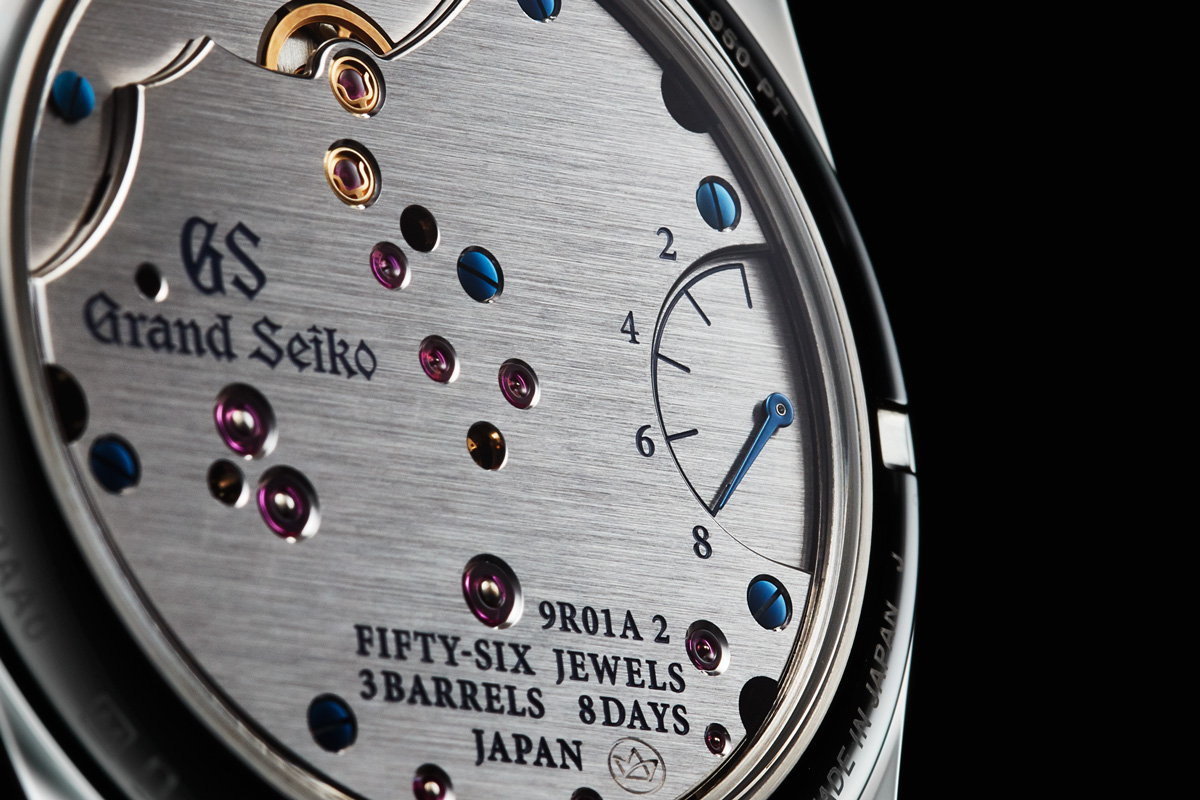
The 8-Day Power Reserve
This is the story of Grand Seiko. It is a story of vision, determination, commitment, innovation and, most of all, of the quiet, calm and utterly single-minded determination of two generations of watchmakers to create watches that are absolutely as good as they can possibly be. The first Grand Seiko appeared in 1960 but the story started long before and continues to unfold and gather pace today. Who knows? Perhaps the best is yet to come.

A new masterpiece from the Micro Artist Studio
High up in the hills of Nagano Prefecture is the facility where all Grand Seiko’s quartz and Spring Drive watches are designed, manufactured and assembled. Deep within this large facility is a small studio where, since 2004, an elite team of the company’s most skilled and talented watchmakers have been creating masterpiece watches based on the unique Spring Drive technology. Their creations include a Minute Repeater, a Spring Drive Sonnerie as well as the much lauded Eichi series. In English as well as Japanese, a sign on the wall quietly announces the Studio’s aim, namely “to create watches that are reliable to wear until grandchildren” and the “pride of Japanese”. The language may be awkward but the sincerity, strength and humanity of the ten-strong Micro Artist Studio team shine through it.

In 2016, twelve years after its establishment, the Micro Artist Studio made its first ever watch for Grand Seiko. It was worth the wait. It was a Spring Drive watch with a new caliber that offered a longer power reserve than any other Grand Seiko watch. This remarkable caliber is accurate to ten seconds per month and has a power reserve of 8 days.
Perfection in every detail
The team at the Micro Artist Studio had created a new caliber that took the timekeeping of Grand Seiko to a new level. They then determined that the watch that housed it should be equally outstanding in its design and finish and in the materials used for the case.

They selected Platinum 950, but increased its density and its resistance to scratches by the cold forging of the metal. The case has Grand Seiko’s trademark distortion–free surfaces thanks to Zaratsu polishing and the dial has a unique “diamond dust” texture like the snow crystals that blow in winter across the slopes of the mountains that surround the Micro Artist Studio.

The dial is wider than on all other Grand Seiko watches and the seconds hand is a full 16.5 mm in length. Like the hour markers, the hands are polished to a razor–edge sharpness so that even the smallest ray of light creates the sparkle of quality that is another essential part of the Grand Seiko signature.


